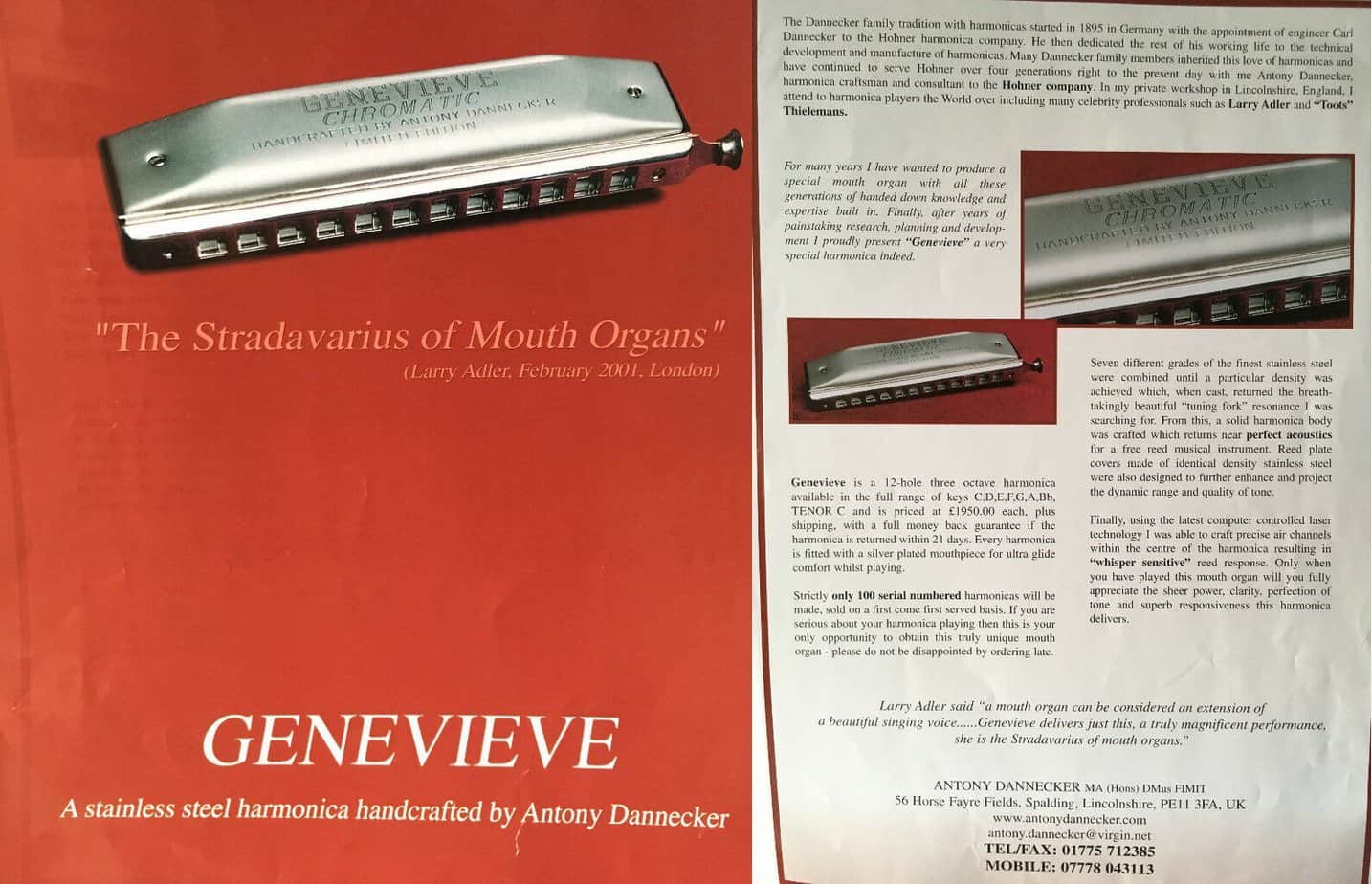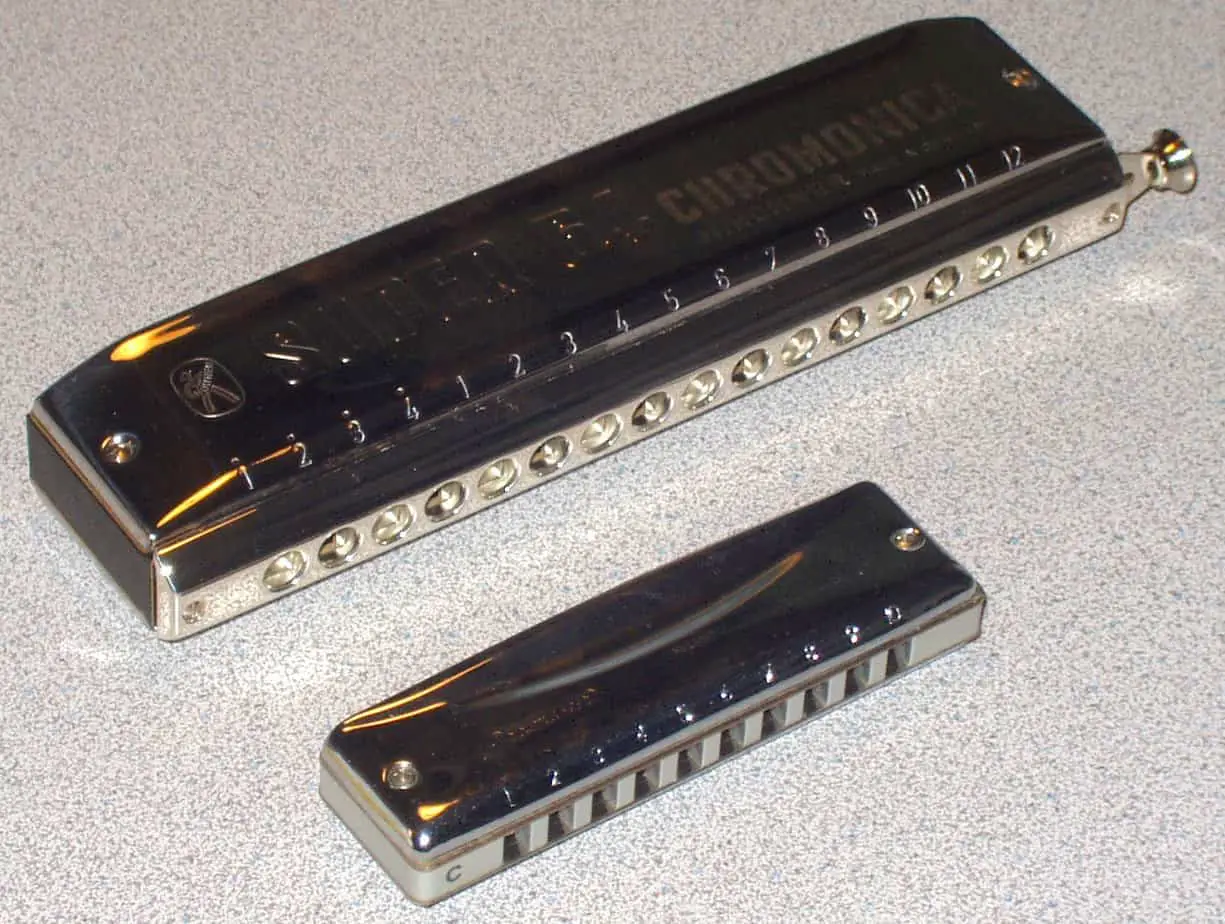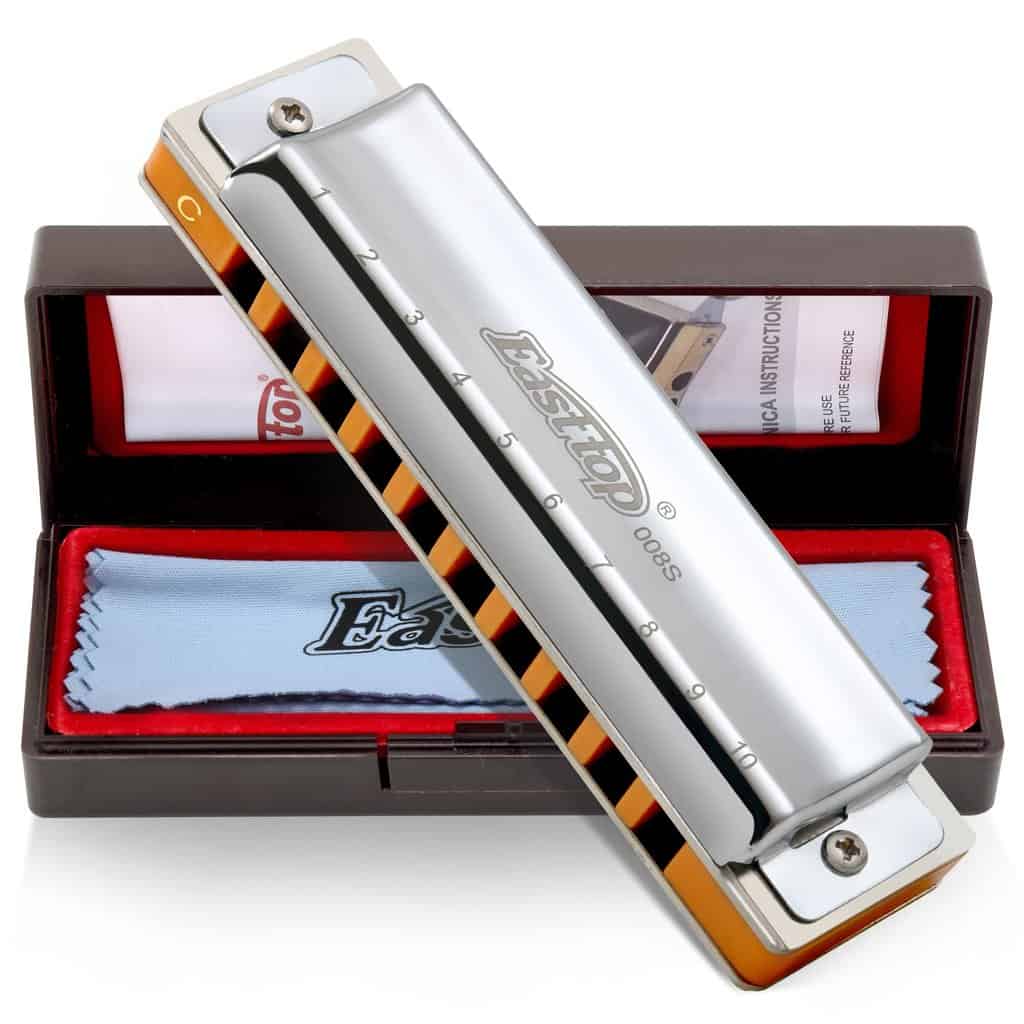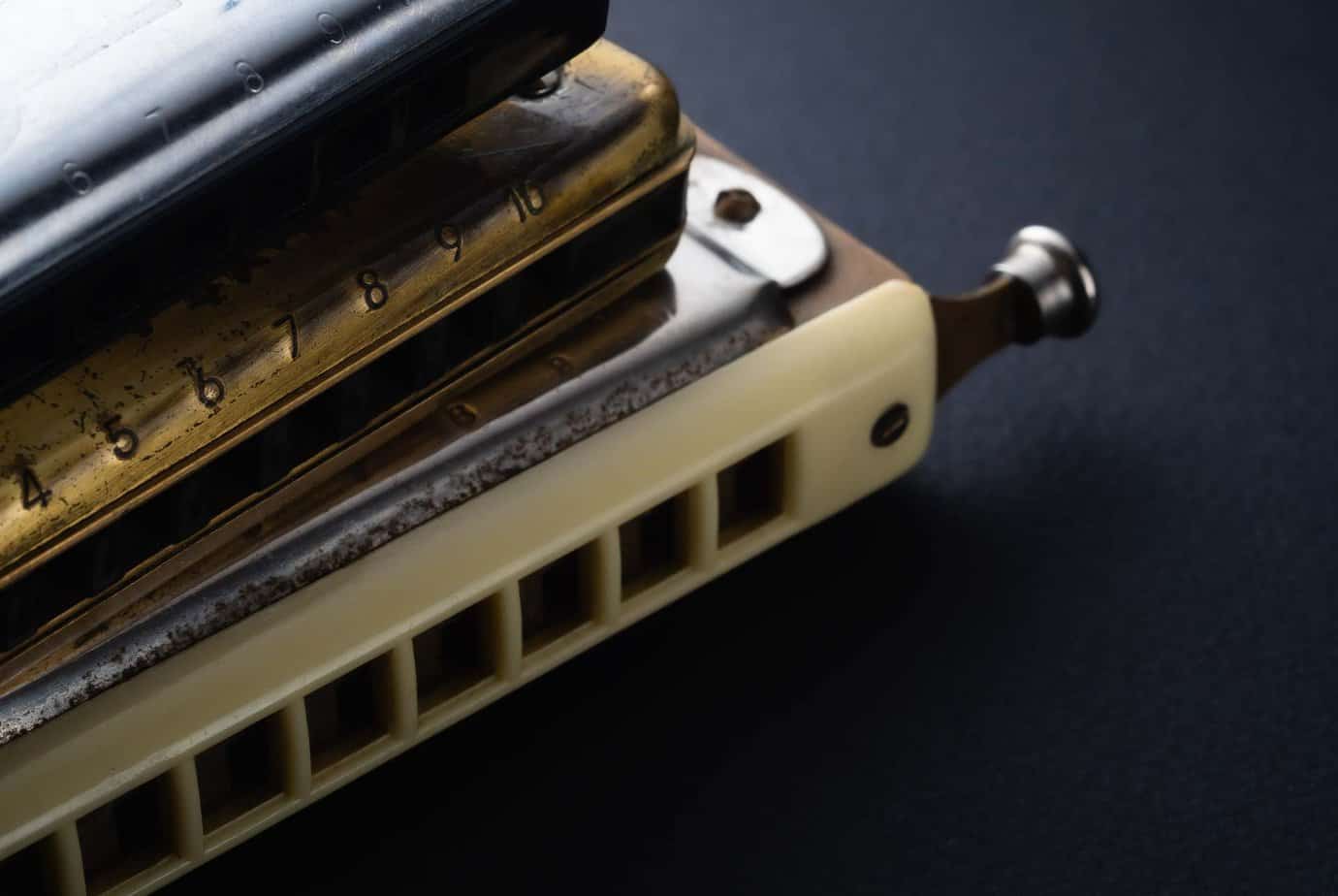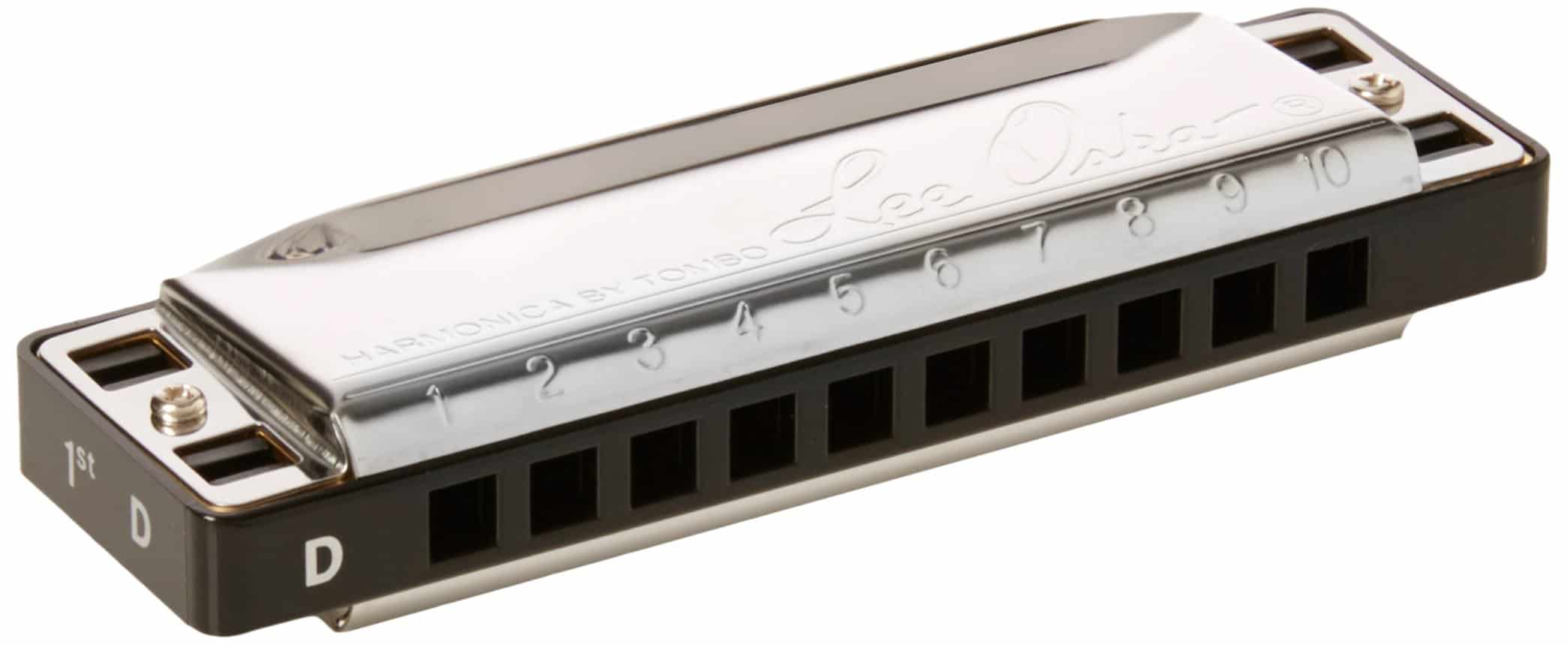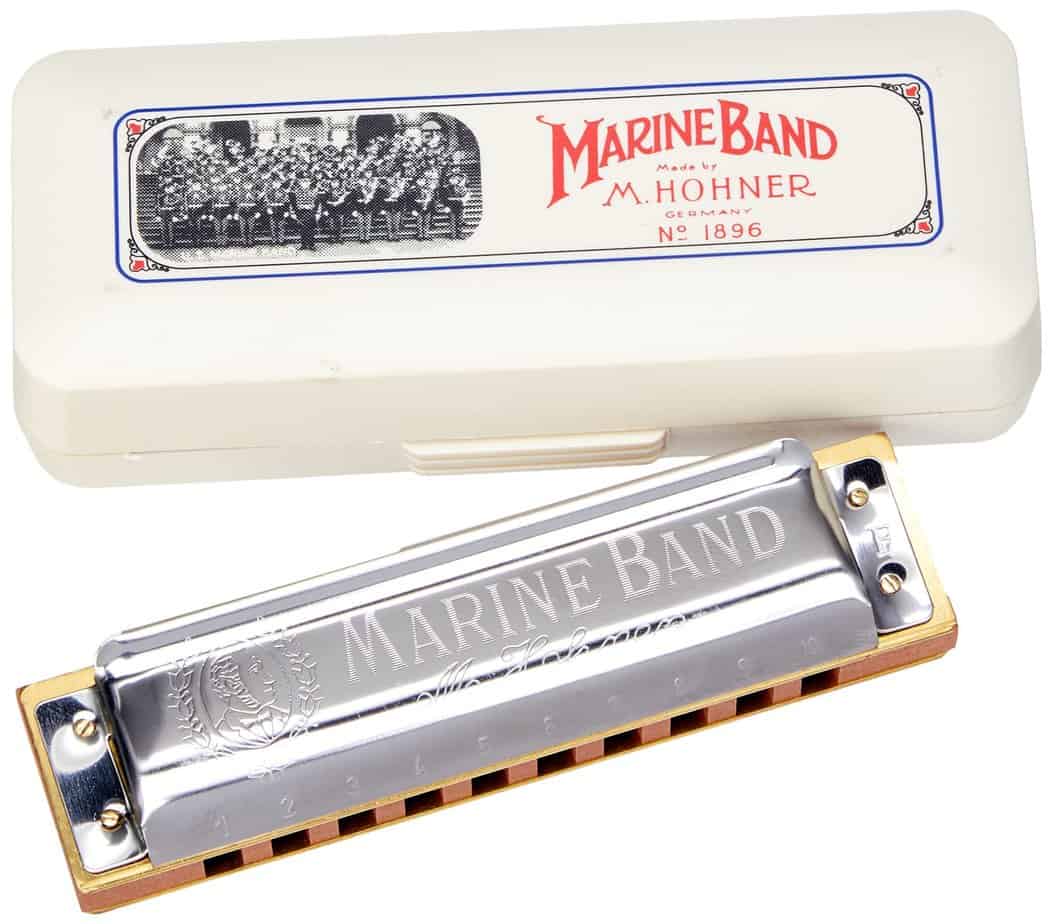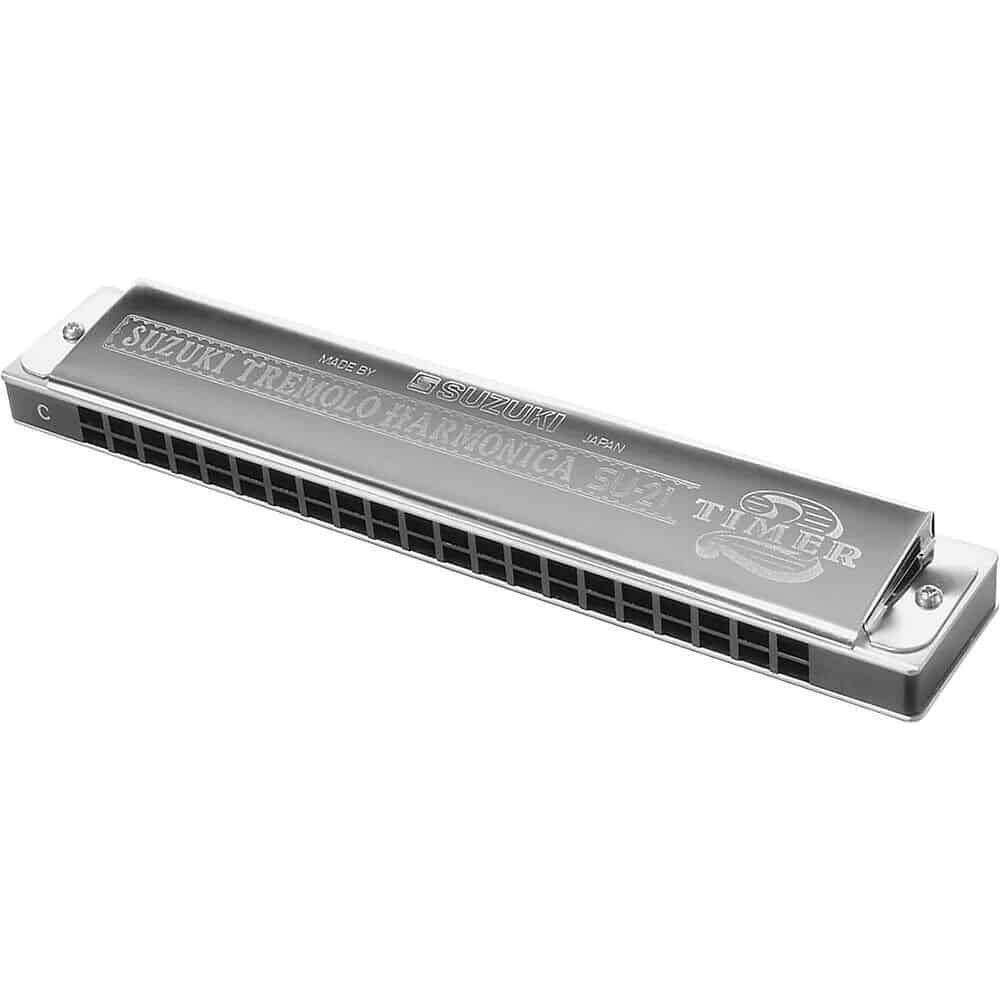As a harmonica enthusiast, I’ve often asked myself the same question: how long does a harmonica last? After all, a harmonica is a delicate instrument that needs to be treated with care and respect. Over time, the inner workings of a harmonica can become worn or damaged due to regular use. In this article, I’m going to uncover the secrets for maximum harmonica durability so that you can make sure your harmonica lasts as long as possible.
Factors Affecting Durability of a Harmonica
Material Quality
High-quality materials will increase the longevity of a harmonica and make it more resistant to wear and tear. Harmonicas made with stainless steel reeds and copper-plated covers are more durable than those made with plastic reeds and plastic covers.
Frequency of Use
How often the harmonica is played also affects its durability. Constant use can cause the reeds to wear out faster, and moisture can also cause corrosion in the reeds and covers.
Maintenance Practices
Regular maintenance practices can help extend the life of a harmonica. Keeping it clean and dry between uses, and replacing worn reeds, can help keep it in good condition.
Diatonic Harmonicas
Diatonic harmonicas are the most commonly used type of harmonica. They are typically 10-hole instruments, with the holes arranged in two complete octaves. These harmonicas are designed to play in a specific key and can be used for a variety of musical styles, including blues, folk, and country. Diatonic harmonicas are generally more durable than chromatic harmonicas, and can last for many years with proper care.
Chromatic Harmonicas
Chromatic harmonicas are more complex instruments than diatonic harmonicas, and they are typically 12-hole instruments. The holes are arranged in two complete octaves, but with additional notes that allow the player to play in any key. Chromatic harmonicas are more delicate than diatonic harmonicas, and they must be handled with more care. With proper care, a chromatic harmonica can last for many years.
Average Lifespan of a Harmonica
Quality Harmonicas
Harmonicas of good quality, when cared for properly, can last for many years. Quality harmonicas are made with durable metal reeds and strong plastic combs. With regular cleaning and maintenance, these harmonicas can last for decades. Cheap harmonicas, however, are not made with the same materials and may only last a few months before they need to be replaced.
2 Standard Harmonicas
| Harmonica Type | Average Lifespan |
|---|---|
| Diatonic | 2-4 years |
| Chromatic | 3-5 years |
Standard diatonic and chromatic harmonicas are the two most common types of harmonicas. A diatonic harmonica is designed to play a single key, while a chromatic harmonica has a slide that allows it to play in any key. The average lifespan of a standard diatonic harmonica is 2-4 years, while a chromatic harmonica typically lasts 3-5 years.
How to Increase the Lifespan of a Harmonica
| Tips | Details |
|---|---|
| Keep it dry | Store your harmonica in a dry place, away from moisture and humidity, to prevent corrosion. |
| Clean regularly | Clean the reeds, cover plates, mouthpiece, and outside casing of the harmonica on a regular basis with a soft cloth. |
| Avoid bending the reeds | Bending the reeds can eventually cause them to break, so try not to do it. |
| Use a harmonica case | This will help to protect the harmonica from being damaged by knocks and drops. |
| Keep it away from pets | Pets can easily damage the harmonica, so it’s best to keep it away from them. |
| Check the reeds | Regularly check the reeds to make sure they’re not bent, cracked, or warped. |
| Avoid extreme temperatures | Exposure to extreme temperatures can lead to cracks and corrosion. |
By following these tips, you can extend the lifespan of your harmonica and ensure it lasts for many years to come.
1 Cleaning and Proper Storage
- Clean the harmonica with a damp cloth after each use.
- Apply oil or petroleum jelly to the reeds and slides regularly.
- Store the harmonica in a dry, non-humid, and temperature-controlled environment.
- Protect the harmonica from dust, dirt, and debris.
- Keep the harmonica in its case when not in use.
2 Regular Maintenance
Regular maintenance of a harmonica is necessary to ensure it lasts for a long time. After each use, the harmonica should be wiped clean with a soft cloth to remove saliva, dust, and debris. The reeds should then be checked for corrosion or damage. If any corrosion is found, the reeds should be replaced or cleaned with a soft brush. Additionally, the cover plates should be inspected for any signs of wear or damage and replaced if necessary. The harmonica should also be lubricated with oil or grease to prevent sticking of the reeds. Regular tuning and adjustment can also help to ensure that the harmonica plays in tune and sounds its best.
Harmonica Brands
There are many harmonica brands available on the market, each offering a range of models and styles. Some of the most popular brands include Hohner, Suzuki, Lee Oskar, Seydel, and Yamaha.
| Brand | Price Range |
|---|---|
| Hohner | $15 – $200 |
| Suzuki | $50 – $200 |
| Lee Oskar | $50 – $150 |
| Seydel | $50 – $200 |
| Yamaha | $50 – $150 |
Hohner is the oldest harmonica brand and is known for its quality construction. Suzuki is another popular brand with a wide range of models and styles, while Lee Oskar is known for its unique design and sound. Seydel is a German manufacturer that specializes in custom-made harmonicas, and Yamaha is known for its affordability and durability.
1 Hohner
- High quality materials used in construction
- Strong and durable construction
- Designed to last for several years
- Protective cover to protect from moisture and dust
- Easy to maintain and clean
2 Suzuki
- Suzuki Harpmaster – This harmonica model has a durable plastic body with brass reeds and is available in 10, 12, 14, and 16-hole models.
- Suzuki Manji – This harmonica model has a stainless steel reed plate and a wooden body. It is available in 10 and 12-hole models.
Both Suzuki models offer a good balance of sound quality and durability, making them ideal for beginners and experienced players alike. With proper care, both models should last several years.
3 Lee Oskar
Lee Oskar harmonicas are a great choice for beginner and intermediate players. Made from durable materials, these harmonicas are designed to withstand the rigors of frequent use. The reeds in these harmonicas are made from high-grade brass and are designed to last for years. They are also equipped with an adjustable wind saver system, which helps extend the life of the instrument. The 3 Lee Oskar models are designed to last between 5 and 10 years with proper care and regular maintenance.
Pros and Cons of Purchasing Different Brands
| Brand | Pros | Cons |
|---|---|---|
| Hohner | Wide range of models, high quality craftsmanship, good customer service | More expensive than other brands |
| Suzuki | Good price, good sound quality | Limited models, may require adjustments for better sound |
| Seydel | High quality, some models have special features | More expensive than other brands, limited models |
| Lee Oskar | Good quality and sound, wide range of models | More expensive than other brands |
| Fender | Wide range of models, good customer service | Sound quality may not be as good as some other brands |
When it comes to selecting a harmonica, there are many brands to choose from. Each brand has its own unique pros and cons, so it’s important to consider all factors before making a purchase.
Harmonica Accessories
Harmonica accessories can help prolong the life of a harmonica. Accessories such as carrying cases, cleaning kits, and harmonicas of different keys are important for harmonica owners to consider.
| Accessory | Purpose |
|---|---|
| Carrying Cases | Protects harmonica from dirt and damage |
| Cleaning Kit | Cleans reeds and other parts of the harmonica |
| Different Keys | Allows players to switch between keys when playing |
Carrying cases help keep the harmonica from accumulating dirt and damage from everyday use. Cleaning kits help clean the reeds and other parts of the harmonica in order to keep it in good condition. Different keys allow players to switch between keys when playing, which can help prevent wear and tear on the harmonica.
Frequently Asked Questions
What are the best practices to ensure maximum harmonica durability?
Clean and maintain the harmonica after each use. This will help prevent dust, dirt, and moisture from building up and damaging the instrument. Ensure that the harmonica is stored properly in a dry, cool environment. Avoid exposing the harmonica to extreme temperatures or humidity. Avoid putting pressure on the reeds as this can damage them. Clean the reed plates regularly with a soft brush, such as a toothbrush, to remove debris and ensure that the reeds are able to vibrate freely. Replace any broken or bent reeds as soon as possible.
How can I tell if my harmonica is well-maintained?
A well-maintained harmonica should have a clean and polished exterior, with the reeds producing a clear, crisp sound. Additionally, the reeds should move freely when the instrument is blown or drawn. Furthermore, the cover plates should fit snugly against the body of the harmonica and the mouthpiece should feel comfortable in the player’s mouth. With regular maintenance, a harmonica can last a lifetime.
Are there any tips to prolong the life of my harmonica?
Regular maintenance and cleaning of your harmonica is the key to ensuring its longevity and optimal performance. Ensure all reeds are in tune and in good condition, and clean the reed plates and mouthpiece with a damp cloth. Use compressed air to blow out dust and debris that may have become lodged in the mouthpiece or reed plates. Store your harmonica in a dry and dust-free environment to prevent the build-up of dust and moisture. Replace worn out reeds when necessary, and use only quality harmonicas and accessories to ensure a high level of performance and long-term reliability.
Are there any ways to fix a damaged harmonica?
Repairing a damaged harmonica is possible, depending on the extent of the damage. If the damage is minor, like a broken reed, replacing the reed is an option. If the damage is more extensive, like cracked reeds, or a broken comb, it may be best to replace the entire harmonica. Professional repair services are available in some locations.
Are There Any Special Techniques To Keep My Harmonica In The Best Condition?
To ensure your harmonica lasts a long time, it’s important to keep it clean and dry. Before and after playing, blow and draw air through the harmonica to remove moisture. Between playing sessions, store it in a dry and dust-free environment. Also, replace the reeds if they become clogged or damaged. Finally, it’s a good idea to occasionally open the harmonica and clean all the parts with a soft brush and warm water.
Conclusion
A harmonica can last for years when taken care of properly. Cleaning it regularly to remove dirt and other foreign matter, storing it in a dry place, and using quality reeds will help ensure its longevity. To maximize the durability of your harmonicas, be sure to use the correct techniques when playing them and avoid overexerting them as this can cause them to break down quicker. Taking all of these steps will ensure that your harmonica will last for years to come.



